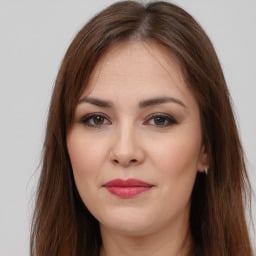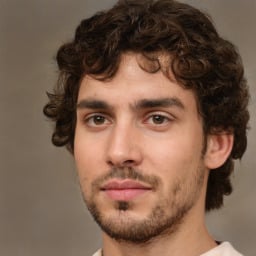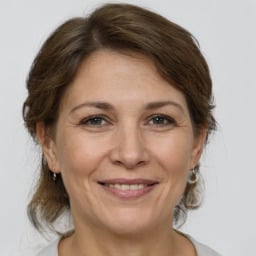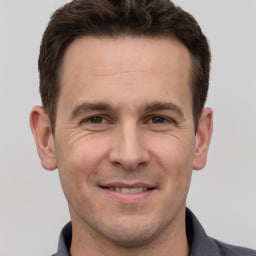Question :
- Comparison of different management styles
- Assessment of various management skills
- Assessment of team ability for accomplishing goals and objectives
- Create a career development plan so that development can be ensured
Answer :
INTRODUCTION
Managers are the one who with their potential and skills contributes successfully and proficiently towards achieving business target and objectives in a predefined way. Thier ability to handle and carry out task is depend upon its management style (Ahmad, Ry Nielsen and Synnott., 2013). On the other hand, leaders paly key role in motivating so that they can work more effectively towards acheivining business goals and objectives. Developing managers means alludes updating abilities, information and capability of administrator in an organized way in order to win satisfactory results. The report is based on Thomas Cook which is a UK based leading tour operator. The report covers different styles of management, communication process, own SWOT analysis, motivation theory and personal and managerial skill require for carrer development.
TASK 1
1.1 Compare different management styles
Management style can be alluded as a general initiative technique frequently utilized by director. Contingent on the condition of an organization, supervisors should need to apply in excess of one style of administration in a less or more formal way to achieve the high level of productivity and adequacy in their undertaking or part (Boud, 2012).
1.2 Discuss leadership characteristic
Leader can be define as a person who inspire and motivate their followers to work all the more adequately and effectively towards achieving organizational goal. Certain skills and capacities are expected to lead group and make viable determination (Cadmus and Johansen, 2012). Thomas Cook and Trailfinder leader's follows various leadership style that vary from each other are discussed below:
Thomas Cook:
1. Participative Leader: This style of leadership is often called as democratic style of leadership as it focuses on valuing the efforts of team and its members by involving them in their decsion making process. It makes them to feel associated with the organization. They likewise enable workers to give their recommendation and view-point on specific issues.
2. Transformational Leader: This style of authority relies on high correspondence level from administration to achieve objectives and target. Leaders of Trailfinder inspire their followers to work increadibly hard towards achieving business goals and objectives in an effective manner.
TrailFinder:
1. Autocratic Leader: In this, style of leadership, the authority remains in the hand of leader only. Even, they take decision without counseling with their colleague . They have authority on laborers and impact them to do function according to their will. This outcomes in producing higher benefits and incomes for the refered to firm, however it needs to construct connection between laborers which isn't useful for the organization from long perspective.
2. Transaction Leader: Under this, Trailfinder's leaders gives prizes and punishment to its workers for their great and terrible execution. When they perform well and finish the errand inside determined time span, pioneers of refered to firm gives prizes to them which might be in the frame fiscal or non-financial (Cozolino, 2014). In any case, when they perform terrible, discipline has been given to them.
Characteristic of Thomas Cook Leader:
1. Effective Communication: their leaders shares good relatiosnhip and compatibility with its workers. This is presumably in light of the fact that they tune in to their view-point likewise and after that reach to final conclusion. Additionally, they advance inviting workplace which empowers representative to impart anything to their pioneers.
2. Problem Solving: Thomas Cook leader's are celebrated for its basic reasoning and explanatory aptitudes. This fundamentally break down the topic and listen the point of view of the two gatherings and afterward at long last make the inference with the shared assent of the two gatherings (Cusworth and Franks, 2013).
Characteristic of Trailfinder leader's:
1. Judgment Quality: They are well known for this trait as they judge worker based on their execution and work done. In the event that he/she has finished the work inside the predetermined time span he/she is a powerful laborer. Once in a while they wind up halfway or predisposition with others.
2. Speciality: Trailfinder is having more more experienced representatives when contrasted with fresher. The reason is straightforward in light of the fact that they trusts that fresher does not have powerful abilities and learning which are basic to achieve organization's goal in an organized way.
Students can take Homework Help UK service from professionals.
1.3 Evaluate communication process
Communication can be termed as two way process that is for the most part related with exchanging data or information between at least two or more individual. It refers to the procedure in which message is exchanged starting with one individual then onto the next with a plan of creating shared comprehension. Here message can be as considerations, feeling or conclusions. The process of communication comprise of 7 primary elements which are discussed below:
1. Sender: The sender is the person who needs to pass on or exchange their message to other individual. He is the person who starts the discussion.
2. Encoding: This procedure is for the most part begins by sender as he utilizes certain images or words for passing on their message to other. The expertise, capacity and learning of sender significantly impact the accomplishment of exchanging of message.
3. Message: Once the way toward encoding has been done by sender, message has been exchanged to reciever (Di Fabbrizio and Lewis, 2015).
4. Channel of communication: In this, sender select the compelling medium through which he exchanges his message or data or to receiver. This can be as oral, verbal and written.
5. Reciever: He is the person to whom sender is sending or transfering its message. He tries to get and comprehend the message in the most ideal way.
6. Decoding: Under this, beneficiary tries to translate the message of sender in a useful way. A correspondence is said to be powerful, just if beneficiary can comprehend the message of sender in a correct way.
7. Feedbackk: This the last advance of correspondence process as it guarantees whether beneficiary has the message or not. What's more, it additionally guarantees whether he can comprehend it in a manner by which senders needs to clarify it.
Different types of communication:
1. Verbal: Such kind of communication for the most part happens over telephone or in by and by. "Oral" is the medium of message in these kind of correspondence. Sender passes on their message orally or by and by and beneficiary concentrate the data by listening painstakingly to it. Thomas Cook regularly utilize this sort of correspondence as narrating, vital discussion and so forth (Firth, Maye and Pearson, 2011).
2. Non-Verbal: This kind of correspondence incorporates half of verbal and half of composed. This implies under this, As indicated by the exploration, it has been discovered that when senders exchanges his/her message to collector by means of real universes just 7% of them is comprehended by them, when sender passes on his message by means of paralanguage just 38% is comprehended by them and when it passes on through non-verbal signals, high odds of understanding emerges i.e. 55%. This is the motivation behind why Thomas Cook picks this strategy when they manages vital customers.
3. Written : Under this, message is mostly exchanged through mail, letter, proposition, email and so on. It is built for an extensive stretch of time. At the point when Thomas Cook needs to manage its outside customers they for the most part favor; composed correspondence (Ghobakhloo and Hong Tang, 2013).
Barriers to communication:
1. Physical Barrier: This arrangements with poor communication like poor lightning, foundation commotion or temperature.
2. Physiological Barrier: It incorporates poor vision, hearing issue or sick wellbeing.
1.4 Evaluate organisational change and culture
Organizations are set up in various courses keeping in mind the end goal to achieve assignment or objective and its structure can ruin or help its encouraging towards accomplishing it. It is classified into three categories which are mentioned below:
1. Functional Structure: Under this all aspects of business element is assembled or arranged as per its motivation or guideline. For example; advertising division, generation office (Schaper, 2016).
2. Divisional Structure: These are frequently utilized as a part of extensive organizations who work their business rehearses in wide land regions or include unmistakable little organizations inside their umbrella unit to conceal different kinds of good or market district. The primary preferred standpoint of this is the necessities and prerequisite can be satisfied particularly and rapidly.
For More Help ask Online Homework Helpers
The culture of any organization determines its beahviour and values that contributes immensely towards the organization. For instance in Thomas Cook, task culture is followed in which their employees perform business activities as per the task given to them so that it can be accomplsihed more effectively and efficiently. On the other hand, Trailfinder follows power culture where all roles and responsibilities are carried out task given to them by higher athority.

























